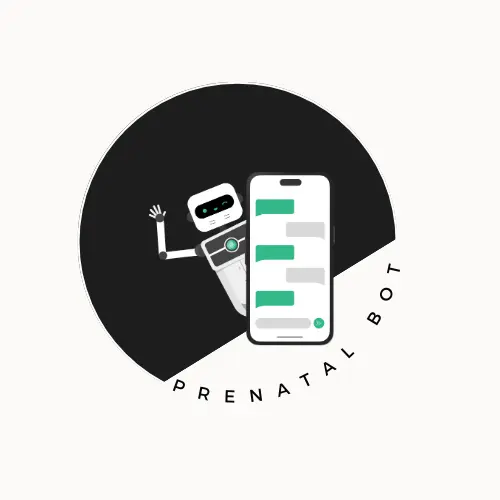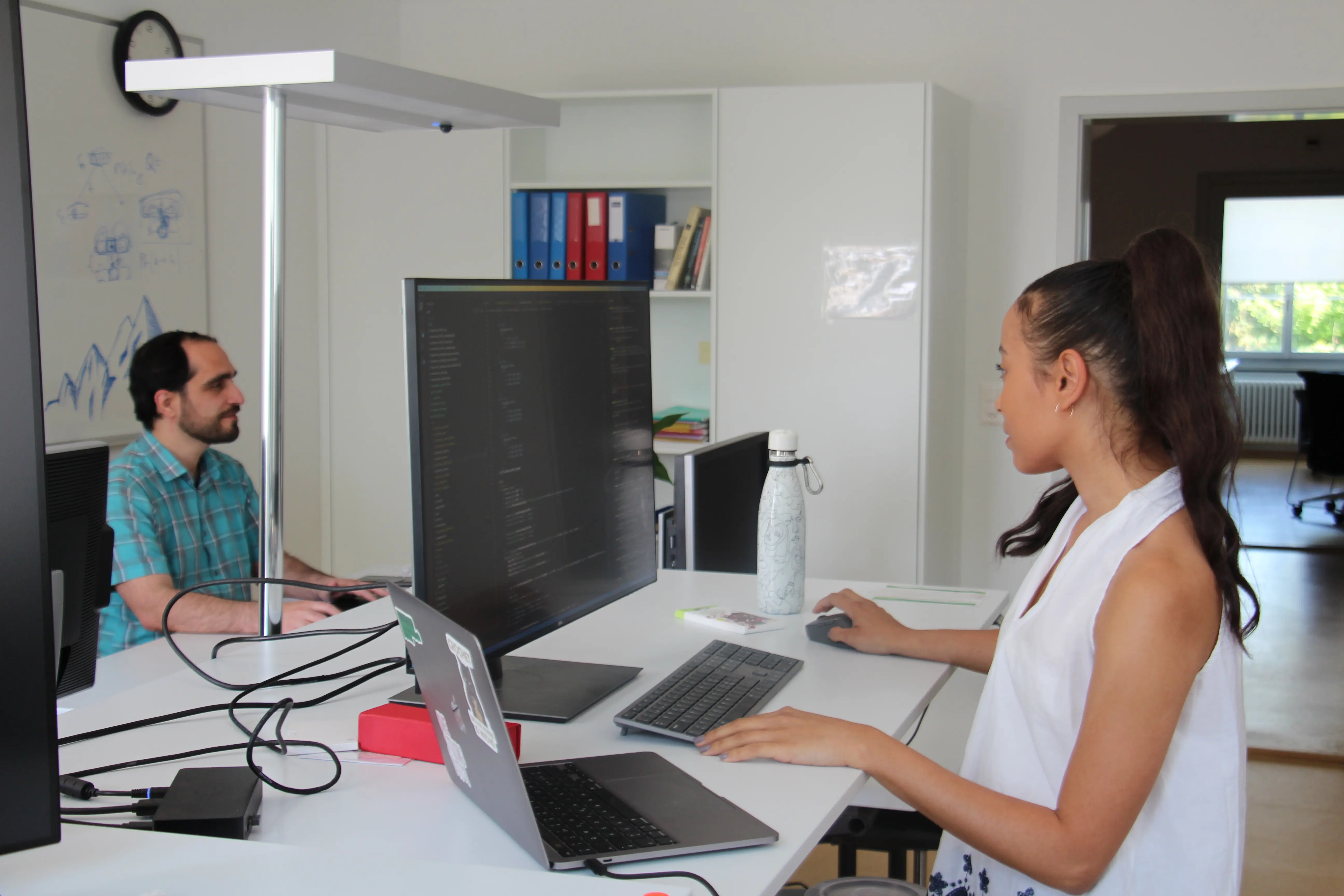Monitoring the health of pregnant women in Zimbabwe
From ZHAW to Zimbabwe - this year, ZHAW digital supports selected projects addressing sustainability and digital transformation. Shannon Vlahakis' project is one of the 12 chosen, focusing on monitoring the health of pregnant women in Zimbabwe. We asked her about the motivation behind this initiative, its current status, the digital methods employed, and the experiences she had during her journey.

Before delving into the project: Can you please introduce yourself? What is your background, and what led you to ZHAW?
I'm an enthusiastic and self-motivated Zimbabwean woman with a genuine passion for health, technology, and people. I came to ZHAW for this exact reason, I felt like the environment was conducive to supporting your own passions and leveraging the things you are good at. Also, I thought ZHAW’s connections with industry would allow me to upskill in a way that would be easily transferable to a working environment.
How do you feel about the "Digital Future Fund" support given by ZHAW digital?
I was surprised and super happy at first, but then that quickly turned to, "okay, we have a lot of work to do Shannon". But generally, I was really pleased that the ZHAW and the people who voted for the project were open-minded and supportive enough to allow for such a project to take place, especially given that it is not on Swiss turf.

What is your project about?
The project stems out of a need to improve the continuity of care for pregnant women in low resource Zimbabwe, particularly those with hypertensive disorders of pregnancy. Gestational hypertension is a leading cause of maternal mortality in the country. Management of this condition requires careful monitoring of vital signs, and digital tools can provide real-time data to enable proactive management. This project enables pregnant women enrolled to have a more active role in the management of their health. Introduction of the blood pressures devices and app, along with educational information about how to manage their blood pressure and what to do in the cases of high values can increase proactive management and improve maternal outcomes.
How did you come up with the idea for this project? What is your motivation?
When I began the Master’s programme in Applied Computational Life Sciences, it was important for me to ensure that the eventual outcome, my thesis, would hold practical, tangible, and meaningful value. I wanted to align it with my career aspirations in project management and my passion for digital health, a field poised to bridge critical gaps in accessibility. I specifically chose to focus on pregnant women, particularly in Zimbabwe, due to the critical need for validated digital tools in this area. My motivation stemmed from personal experience, as I witnessed my sister navigate a high-risk pregnancy, which highlighted the challenges and expenses associated with additional ANC visits, especially for those living far from healthcare facilities. Beyond the logistical challenges, the anxiety that accompanies a high-risk pregnancy further reinforced the need for a solution that provides continuous monitoring support, and educational resources. The country requires substantial efforts to enhance maternal outcomes, and I firmly believe that digital tools offer the most straightforward means to address compliance issues, particularly in ensuring adherence to the recommended number of ANC visits for each woman and providing a means for high-risk pregnant women who, for various reasons, cannot easily access quality healthcare.
Who are your project partners, and how is the cooperation coordinated?
The project is being carried out at the maternity ward (Mbuya Nehanda) in Parirenyatwa hospital but as a private project due to several restrictions mainly related to timeline. In the future, if I get the opportunity to continue, I’d hope to collaborate with a technical university in Zimbabwe and forge a new relationship and partnership between a university in Zimbabwe and Switzerland.

You work in the Centre for Computational Health and are pursuing a master’s degree in Applied Computational Life Sciences. What digitalization methods are you utilizing in your project, and how do they contribute to your research?
What was important to me was to test a solution that would be sustainable within the context of this population. And my thinking was that the best way to do that is not to re-invent the wheel but to rather integrate simple tools into a platform that is already widely used and accepted. In the context of Zimbabwe, data bundles are quite expensive and the smartphones available to the larger population are quite limited in their functionality, but most have the minimum capacity of at least having WhatsApp. Mobile network providers in the country even provide data bundles specific to the platform. So, I thought that the best way to ensure a level of compliance in terms of continuous monitoring would be to use this platform and teach the women the importance of monitoring their vital signs and symptoms and empower them to do that themselves. Patients were taught how to measure their blood pressure and conduct a dipstick urine protein test and then how to self-report these details via WhatsApp through secure forms. Once they were discharged from the hospital, they were onboarded into the study and received daily reminders to self-report their measurements based off the schedule defined by the nurse. The nurses could then monitor each patient via the dashboard.
So yes of course throughout my degree and within the work capacity, you learn a lot of complex machine learning processes which is fantastic but my interest being in digital health and more specifically digital public health, you’ll find in some contexts, innovation is found in the simplest of methods. For me, that meant playing around with APIs, using Python to automate tasks, and creating a user-friendly patient monitoring dashboard. And, of course, I made sure to apply all the data ethics principles I've learned along the way.

What is the status of the project? What are the next steps?
We have successfully enrolled 30 patients in our pre-study, who are actively engaging with the platform and providing their vital sign measurements daily. We completed the data collection at the end of November. Following this, we will proceed with post-intervention interviews/surveys and dive into the analysis and documentation process. Simultaneously, we are conducting user-testing of the patient dashboard with nurses at the hospital to identify areas for functional improvement.
What challenges did you experience? What opportunities did you see?
The biggest challenge for me personally was going through my first ethics approval process and having done it alone in Zimbabwe with little support. The most demanding task was creating the patient consent forms and education materials. Designing them for participants with lower levels of education, some of whom were illiterate, and then translating them into local languages, presented a lengthy and demanding process. However, the whole experience has allowed me to make some great connections in Zimbabwe and learn a lot about the research landscape in the country. And I can assure you there is a lot of interest in this field in the country.

Is there anything else you would like to share about your project?
I would just mention that the most significant lesson I've learned throughout this process is the ability to pivot. I encountered numerous setbacks, including partners who were providing the technology pulling out at the last minute. This required me to respond quickly and devise alternative solutions, resulting in a significant shift in the project's scope. Nevertheless, I'm still quite pleased with the outcomes achieved so far and that the patients are engaging with the platform. I would like to thank everyone who supported me in this project!
- More information about the Master's programme in Applied Computational Life Sciences.
- More about the Centre for Computational Health, ICLS.